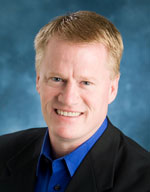Column: Super-Hyped Super Bowl
Forty-five years ago, the Super Bowl … wasn’t even the Super Bowl. They called it the NFL-AFL Championship Game, until one of the founders renamed it after watching his grandson play with a “High Bouncing Ball” – a super ball. Super ball – Super Bowl. Get it? And thus, an artificial event was born.
Tickets were just fifteen bucks for that first game – and they barely sold half of those, leaving some 40,000 empty seats in the Los Angeles Coliseum.
A 30-second ad cost only $42,000 – and they weren’t any different than the ads they showed the previous weekend. The half-time show featured three college marching bands – including one you might have seen from the University of Michigan.
Over the next couple decades, of course, the event became a veritable national holiday. Tickets now sell for thousands of dollars, and ads for millions. The game attracts more than 100 million viewers in the U.S. alone.
The hoopla surrounding the game has exploded, too. Instead of sticking to college marching bands for halftime, they branched out into other forms of entertainment. For reasons I’ll never understand, that included four appearances by a group called “Up With People!” Or, as the Simpsons called them, “those clean-cut young go-getters, Hooray for Everything!’”
“Up with People!”? As opposed to what, exactly? “Down With Humans!”? Besides, I don’t think we can afford to be that conclusive. “Up With People” sounds great – so long as we’re not talking all people.
One year they devoted the show to America’s 200th anniversary, followed by the 100th anniversary of Hollywood, the 40th anniversary of the Peanuts’ comic strip, then the 25th anniversary of … the Super Bowl itself. You kind of got the feeling they were running out of ideas.
That all changed in 1993, when Michael Jackson performed the half-time show, and his hair caught on fire, or his sister suffered a ‘”wardrobe malfunction” or maybe they conducted the OJ trial live on the 50-yard line – I’m sorry, but these events have started to blur for me.
The point is, the half-time show became a big deal. Such a big deal, in fact, that the ratings were higher for the show, than for the game. A survey showed most fans said they would rather miss a play than an ad. Style had officially triumphed over substance.
That might have been a good thing, because the game itself usually stunk. Of the first 30 Super Bowls, only seven – less than a quarter – were within a touchdown. But more than half the past 15 Super Bowls have been that close.
And that’s good, too, because now all the stuff around the game itself – the national anthem, the half-time shows, the ads – have become almost unwatchable.
On Sunday we heard Christina Aguilera butcher the Star Spangled Banner, which was bad enough. But then we heard the Black Eyed Peas butcher their own songs, which was even worse.
The only thing that matched the quality of the game – which was great, once again – was the now-famous Chrysler ad. It was as much about their car as it was about the city that spawned it. It certainly beat piling on the poor city, which every hack out there has already done. And it was better than the dopey old campaign, “Say Nice Things About Detroit.” Yes, and “Up With People!” too, while you’re at it.
No, the ad was authentic, it was serious, it was sincere. It was real.
When you look back at the checkered history of over-hyped Super Bowl games and shows, that understated ad stands out as something truly super.
About the author: John U. Bacon lives in Ann Arbor and has written for Time, the Wall Street Journal, and ESPN Magazine, among others. He is the author of “Bo’s Lasting Lessons,” a New York Times and Wall Street Journal business bestseller, and “Third and Long: Three Years with Rich Rodriguez and the Michigan Wolverines,” due out this fall through FSG. Bacon teaches at Northwestern’s Medill School of Journalism, and the University of Michigan, where the students awarded him the Golden Apple Award for 2009. This commentary originally aired on Michigan Radio.





The National Anthem was dreadful and not primarily because she forgot the words. When one is asked to sing the National Anthem (and I have been one of them) one needs to remember that it is not a performance! The purpose is not to “wow” the crowd with your personal interpretation of the Anthem, but to lead them all in singing it. They can’t join in singing if they can’t follow your lead. We have far too many people performing the National Anthem and far too few leading the crowd in singing it.